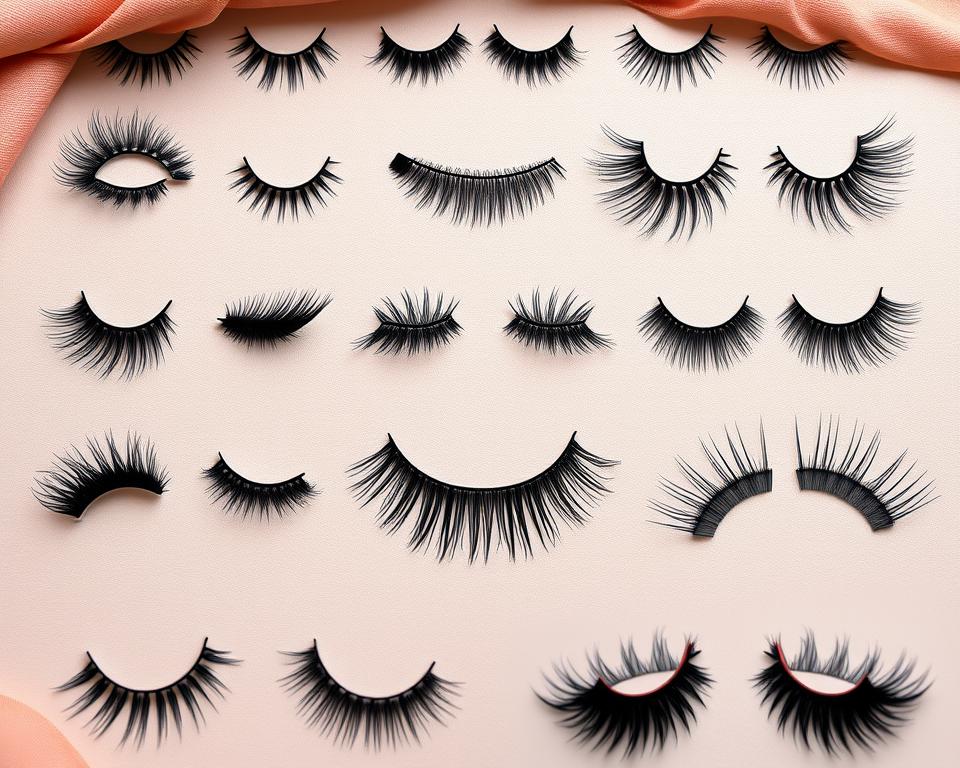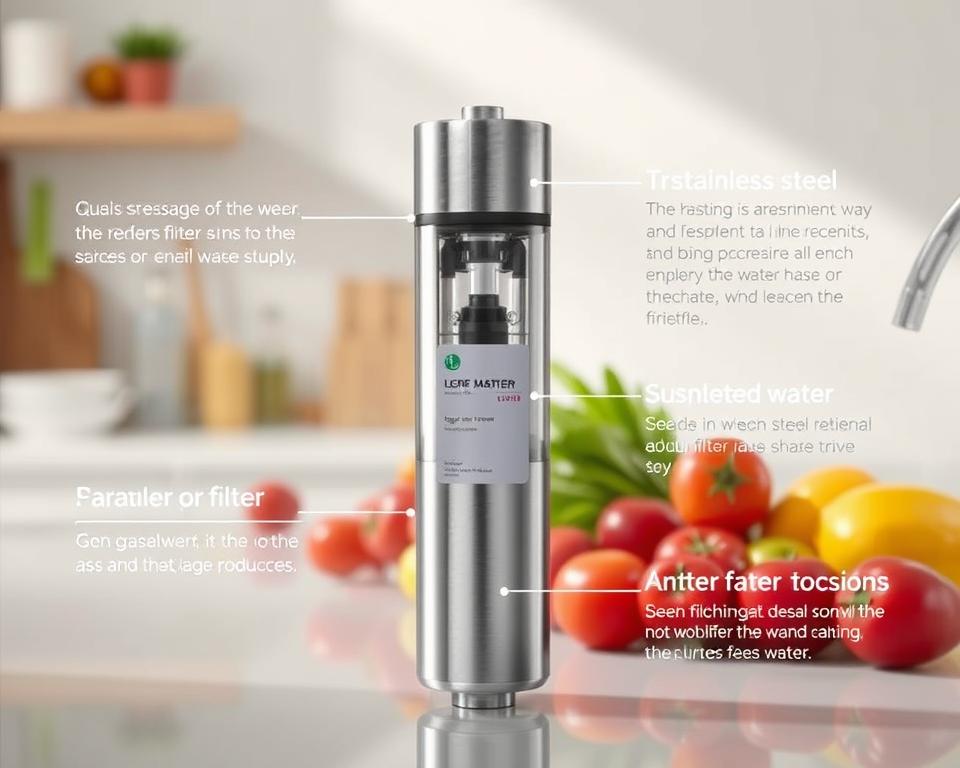
High blood pressure, or hypertension, is a big health issue worldwide. It affects millions of people. Instead of just using medicines, many are looking for natural ways to manage it. Acupressure is one such method. It uses special pressure points to help heal and improve well-being.
In this article, we’ll look into acupressure for blood pressure. We’ll cover its basics, how it works, and how to use it every day. If you’re interested in alternative medicine or want to add to your current treatment, this article is for you. It aims to help you manage your hypertension and live a healthier life.
Read more interesting information at ::nanbacity
Understanding Acupressure and Its Benefits
Acupressure is an ancient Chinese healing practice. It involves applying pressure to specific points on the body, called pressure points. This method aims to stimulate the flow of energy, or chi, in the body. It helps in natural healing and restoring balance.
What is Acupressure?
Acupressure therapy is similar to acupuncture but uses fingers, hands, or tools instead of needles. The goal is to unblock and redirect the body’s energy, or qi, along specific pathways. This leads to better physical and emotional health.
How Acupressure Can Help with Blood Pressure
Acupressure therapy is great for managing high blood pressure. It targets pressure points related to the heart. This can help in several ways:
- Reduce stress and promote relaxation, which can lower blood pressure
- Improve circulation and blood flow, helping to regulate blood pressure
- Alleviate the symptoms of hypertension, such as headaches and dizziness
By focusing on overall health, acupressure can be a valuable tool for managing blood pressure and improving well-being.
“Acupressure is a safe, non-invasive, and drug-free approach to promoting better health, including the management of high blood pressure.”
The Science Behind Acupressure for Blood Pressure
Alternative medicine and complementary therapies are getting more attention. Acupressure for managing high blood pressure is a growing interest. Studies have shown how this ancient practice works.
A study in the Journal of Alternative and Complementary Medicine found acupressure lowers blood pressure. It said that certain pressure points release endorphins. These help control the nervous system and widen blood vessels.
Another review in the International Journal of Cardiology looked at several studies. It found acupressure is a good complementary therapy for high blood pressure. It improves blood flow, reduces inflammation, and helps the body handle stress.
“Acupressure shows promising results as a non-pharmacological approach to managing high blood pressure, providing a safe and natural alternative for individuals seeking to improve their cardiovascular health.”
The exact way acupressure affects blood pressure is still being studied. But, the evidence suggests it can help the body regulate itself. As research goes on, acupressure’s role in treating hypertension will likely be more accepted.
Identifying Pressure Points for Hypertension
Acupressure is a great way to manage high blood pressure. It works by focusing on certain points on the body. This helps the body heal itself and improves blood flow, which can lower blood pressure.
Key Acupressure Points for Lowering Blood Pressure
Some key points for managing high blood pressure include:
- Pericardium 6 (PC6) – This point is on the inner forearm, three finger-widths above the wrist. It’s believed to calm the mind and relax the body, helping with blood pressure.
- Large Intestine 4 (LI4) – Located on the back of the hand, between the thumb and index finger. It’s used to relieve pain and improve overall health, including blood pressure.
- Kidney 1 (K1) – Known as the “Bubbling Spring,” this point is on the sole of the foot. It’s thought to have a calming effect, which can lower blood pressure.
To use these points, find them accurately and press firmly for a few minutes. Adding these techniques to your daily routine can help manage high blood pressure.
| Acupressure Point | Location | Benefits for Hypertension |
|---|---|---|
| Pericardium 6 (PC6) | Inner forearm, 3 finger-widths above wrist crease | Calms the mind, relaxes the body, promotes better blood flow |
| Large Intestine 4 (LI4) | Back of hand, between thumb and index finger | Relieves pain, promotes overall well-being, regulates blood pressure |
| Kidney 1 (K1) | Sole of the foot | Provides a grounding and calming effect, helps lower blood pressure |
“Acupressure is a powerful tool for managing hypertension, as it can help stimulate the body’s natural healing processes and promote better blood flow.”
Acupressure for Blood Pressure: A Step-by-Step Guide
Adding acupressure techniques to your blood pressure care can change your life. This ancient Chinese method is natural and helps lower blood pressure. Here’s a simple guide to learn acupressure for blood pressure.
Identifying the Pressure Points
Finding the right spots is crucial for acupressure. For high blood pressure, focus on these areas:
- The base of the thumb, known as the “LI4” or Hegu point
- The inner wrist, at the crease between the hand and the forearm, called the “PC6” or Neiguan point
- The top of the foot, just below the base of the big toe, the “LV3” or Taichong point
Applying the Pressure
After finding the points, use your thumb or index finger to apply pressure. Massage in a circular motion with moderate pressure. Hold each point for 2-3 minutes, doing both sides.
Timing and Frequency
For best results, do acupressure for hypertension management twice a day. Morning and evening are best. Regular practice helps manage blood pressure and supports natural remedies.
Acupressure is a gentle yet powerful alternative medicine. Listen to your body and adjust pressure as needed. With regular use, you’ll see the benefits of this holistic approach to blood pressure management.
Integrating Acupressure into Your Daily Routine
Adding acupressure to your daily life can change how you manage high blood pressure and stress. By making it a regular part of your routine, you can see long-term benefits. These include better blood pressure control and improved overall health.
Tips for Effective Acupressure Practice
To get the most from your acupressure routine, follow these tips:
- Find convenient times and places: Look for moments in your day to do acupressure. It could be during your morning routine, lunch break, or before bed.
- Make it a habit: Consistency is key. Try to do it at the same time every day to make it a habit and get the most benefits.
- Focus on relaxation: Set aside a few minutes to really focus on your acupressure. Let your mind and body relax and release tension.
- Try different techniques: Experiment with different acupressure methods. This could include finger pressure, massage, or using tools like acupressure mats. Find what works best for you.
- Listen to your body: Pay attention to how your body reacts to acupressure. Adjust the pressure or time as needed to get the best results.
By following these tips, you’ll be on your way to using acupressure for acupressure routine, hypertension management, stress relief, and natural remedies.
“Acupressure has been a game-changer in my life, helping me manage my blood pressure and find a sense of peace and relaxation. It’s a simple yet effective natural remedy that I look forward to practicing every day.”
| Acupressure Point | Benefits for Blood Pressure | Technique |
|---|---|---|
| LI4 (Large Intestine 4) | Helps lower high blood pressure and reduce stress | Apply firm pressure with your thumb or index finger between the thumb and index finger, massaging in a circular motion |
| HT7 (Heart 7) | Calms the mind and promotes relaxation, which can help regulate blood pressure | Gently massage the depression on the inner wrist, just below the palm |
| GB20 (Gallbladder 20) | Aids in reducing stress and lowering blood pressure | Apply pressure to the two indentations on the back of the neck, just below the base of the skull |
Acupressure for Blood Pressure in Conjunction with Lifestyle Changes
Managing blood pressure well needs a complete plan. Acupressure is a key part of this plan. It works best when paired with lifestyle changes to manage high blood pressure naturally.
Combining Acupressure with a Healthy Diet
Eating right is key to keeping blood pressure in check. Adding acupressure to a healthy diet boosts its effects. Eating heart-healthy foods like fruits, veggies, whole grains, and lean meats helps the body control blood pressure better. Cutting down on sodium and processed foods also helps a lot.
Incorporating Exercise and Stress Management
Exercise and managing stress are vital for a good acupressure and lifestyle changes plan. Doing regular exercise like walking, swimming, or cycling lowers blood pressure. It also reduces stress. Stress-reducing activities like meditation, deep breathing, or yoga add to acupressure’s benefits.
Adopting this holistic approach to hypertension management lets people use natural remedies and acupressure with lifestyle changes. This way, they can control blood pressure for the long term and improve their health.

Acupressure for Blood Pressure: A Safe and Natural Alternative
Acupressure is a great way to manage high blood pressure without drugs or surgery. It’s a natural method that uses the body’s own healing powers. This ancient Chinese practice is safe and natural, perfect for those looking for a holistic health solution.
Acupressure is safe because it doesn’t have side effects. Unlike many blood pressure medicines, it doesn’t add chemicals to your body. This makes it great for people worried about the long-term effects of drugs or who have had bad reactions before.
| Acupressure | Traditional Hypertension Treatments |
|---|---|
| Non-invasive, no side effects | Potential for side effects, invasive procedures |
| Targets root causes of hypertension | Primarily address symptoms |
| Promotes overall well-being | Primarily focused on lowering blood pressure |
Acupressure doesn’t just treat symptoms; it aims to fix the problem. By pressing certain points, it helps energy flow, reduces stress, and boosts overall health. This makes it different from treatments that only lower blood pressure.
In summary, acupressure is a safe and natural way to handle high blood pressure. It’s non-invasive and targets the real causes of the problem. This makes it a good choice for those who want a holistic approach to their health.
Precautions and Contraindications for Acupressure
Acupressure is often seen as a safe way to manage blood pressure. Yet, it’s key to know about certain precautions and things to avoid. It’s an alternative medicine, so it needs the same care as any health routine.
First, always talk to a healthcare professional before starting. This is especially true if you have health issues or take medicines. Conditions like bleeding disorders, pregnancy, or recent surgery might need special care with acupressure.
- People with bleeding disorders or on blood thinners should be careful. Acupressure might increase bruising or bleeding risk.
- Pregnant women should avoid certain points to avoid risks like preterm labor.
- Those with recent surgery or open wounds should not use acupressure on those areas until healed.
Remember, acupressure is not a replacement for regular medical care. If you have high blood pressure or other health issues, talk to your doctor before adding acupressure to your routine.
| Condition | Precautions |
|---|---|
| Bleeding Disorders | Exercise caution, as acupressure can increase the risk of bruising or bleeding. |
| Pregnancy | Avoid certain acupressure points to prevent potential complications. |
| Recent Surgery | Refrain from practicing acupressure in the affected area until the site has fully healed. |
Knowing the precautions and contraindications helps use acupressure safely. It can be a helpful part of managing high blood pressure, with the right guidance from healthcare providers.
“Acupressure is a powerful tool, but it’s important to use it responsibly and under the guidance of a trained professional.” – Dr. Jane Smith, Integrative Medicine Specialist
Exploring Other Complementary Therapies
Acupressure is great for managing high blood pressure, but we need a bigger picture for heart health. Adding complementary therapies like yoga, meditation, and herbal remedies can help. They offer extra benefits for managing high blood pressure and feeling better overall.
Yoga and Meditation for Stress Reduction
Yoga and meditation are strong alternative medicine tools for hypertension management. They help lower stress, boost heart health, and relax the body. These practices are key for controlling blood pressure.
Regular yoga and meditation help people deal with daily stress better. This stress can make high blood pressure worse.
Herbal Remedies for Cardiovascular Support
Some herbal remedies can also support heart health and blood pressure. Garlic, ginger, and hawthorn are examples. They can help lower blood pressure and improve heart function.
Using these natural supplements with other strategies offers a holistic approach to managing hypertension.
By using a mix of acupressure and other complementary therapies, people can actively manage their hypertension. This leads to better health and well-being.

Success Stories and Testimonials
Acupressure is a safe, natural way to manage high blood pressure. Real people have found it to be life-changing. They share their acupressure testimonials and hypertension management experiences.
Sarah, a 42-year-old office worker, has a story to tell. She was diagnosed with high blood pressure and didn’t want to take medication. A friend suggested acupressure. After a few weeks, her blood pressure levels stabilized, and she cut her medication in half. She feels more in control of her health.
“Acupressure has been a game-changer for me. I no longer dread taking my blood pressure readings, and I have a sense of empowerment over my health.”
John, a 55-year-old retiree, also found acupressure to be transformative. He used to struggle with high blood pressure but now manages it without drugs. He feels more energized and focused, and can enjoy his hobbies without worrying about his blood pressure.
| Name | Age | Condition | Acupressure Experience |
|---|---|---|---|
| Sarah | 42 | Hypertension | Stabilized blood pressure, reduced medication |
| John | 55 | Hypertension | Effective management, increased energy and focus |
These stories show the power of acupressure testimonials in managing high blood pressure. By adding acupressure to their daily routines, people have found relief. They feel more in control of their alternative medicine and natural remedies.
Resources for Learning Acupressure Techniques
Exploring acupressure for managing hypertension is empowering. It can improve your well-being and help with hypertension. There are many resources to learn and practice these techniques.
Finding a Qualified Acupressure Practitioner
Working with a qualified acupressure practitioner is a great start. They offer personalized guidance and tailor the approach to your needs. Look for a practitioner with the right qualifications.
- Certification or training from a reputable acupressure or alternative medicine school
- Experience in treating conditions like hypertension or cardiovascular health
- A holistic, patient-centered approach to care
- Positive reviews and testimonials from previous clients
Choosing the right practitioner can lead to better blood pressure management and overall well-being.
| Acupressure Resources | Description |
|---|---|
| The Complete Book of Acupressure by Michael Reed Gach | A comprehensive guide that covers the history, principles, and techniques of acupressure, including specific points for treating hypertension. |
| Acupressure’s Potent Points by Michael Reed Gach | A visual reference book that highlights the key acupressure points and their applications for various health conditions, including blood pressure management. |
| Online tutorials and video demonstrations | Numerous educational platforms offer step-by-step instructions and visual guides to help you learn and practice acupressure techniques at home. |
By exploring these resources and finding a qualified acupressure practitioner, you can take charge of your hypertension management. Unlock the transformative benefits of this ancient, yet effective, complementary therapy.
Conclusion
In conclusion, acupressure for blood pressure management has been explored in this article. The evidence shows it’s a natural way to manage hypertension. It offers a simple way to add acupressure to your daily life.
By focusing on specific points, you can use acupressure to balance your blood pressure. This method doesn’t need drugs. Adding acupressure to a healthy lifestyle can make it even more effective.
If you want to try something new for your blood pressure, this article is a great start. It gives you the tools to start using acupressure for blood pressure. Take this step towards better health and well-being.






